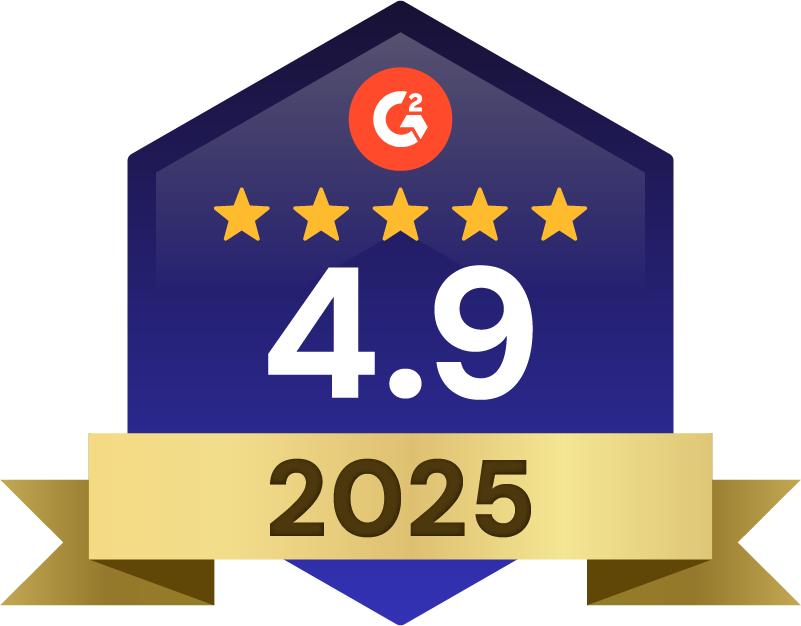By using storytelling techniques, you can create compelling content that will stick in your audience's mind. This article cover 6 techniques and examples.
Content Marketing
When we think of ‘storytelling’, we immediately think of books and movies. But examples of storytelling can be found everywhere. A quick look at well-known titans of industry, such as Steve Jobs, Robert Kiyosaki, and Gary Keller, reveal master storytellers who have built empires on the back of great storytelling.
We love stories because they allow us to experience exciting situations and events without sacrificing comfort. Storytelling also makes it easy for the listener to memorize information (and share it with others) since good stories follow a sequence of exciting events that stick in their minds.
Storytelling is such a fundamental part of our human existence, that research suggests it may even be hardwired into our brains. Our brains automatically process all the information taken in by our senses and translates it into a coherent narrative.
All of us are storytellers. ?
Of course, that’s all fine and good, but what does that have to do with creating real estate content?
Real estate is all about personal stories. People raise families in homes. Couples overcome challenges to purchase their first property. Children befriend the kids from their neighborhood and play together. It’s easy to find stories within the real estate industry if you pay attention.
But due to the feature-and-statistics-heavy nature of the industry (and lack of time), it’s easy for real estate agents to write pieces of content that focus on the more “superficial” aspects of real estate, which is about as exciting and intriguing as a tax return.
But it doesn’t have to be that way. By applying even just a few of the simple storytelling techniques we’ll cover in this article, you’ll be able to create much more engaging and memorable pieces of content that your audience will look forward to.

1. Have an intended message
Every good story has moral:
- Star Wars tells us that good can triumph over evil with a little determination (and some space magic).
- The Tortoise and the Hare tells us to never give up.
- Apple’s infamous “1984 ad” told people to form the early 80’s that Macintosh computers were the only hope to stop IBM’s seemingly unstoppable, “Big Brother-esque” computer market monopoly. ??
Whether you’re crafting a new blog post, putting together a promotional video, or a programming a virtual property tour, you need to have a ‘moral’ that you want the target of your content to come away with.
For example:
- Are you looking to convince buyers that the listing you’re currently promoting on Facebook is right for them?
- Do you plan on promoting a new gated community that will allow its residents to enjoy the lifestyle they’ve always dreamed of?
- Are you promoting yourself as a local expert that your readers can trust?
Once you have a clearly defined ‘moral’ that you want your readers to take away, you’ll use your storytelling skills to craft an effective narrative around it, without blatantly spelling it out.

2. Create an attention-grabbing headline
If anybody is going to listen to your story all the way through, first you need to grab their attention. This is especially true in today’s short-attention-span internet culture. If you’re going to dwell on any aspect of your content creation process, make sure it’s the headline and premise.
Think about it, which headline would you rather click on:
- “Vancouver luxury real estate owners are renting their homes to college kids” or
- “$1,000 bucks for all this?: Students live like kings in Vancouver’s empty mansions”
Sure, there’s nothing wrong with the first headline. It tells you exactly what the contents of the article are. Unfortunately, it comes across as dull, because it sounds just like every other real estate report.
The second headline, on the other hand, puts the spotlight on the weirdness of the situation and basically forces you to click on it just to see if the story is real or not.

Yup. It’s a real story.
To create a great headline and an introduction that will draw your readers in, make sure it answers these three questions:
- Who are you talking about?
- Does it have an interesting or out-out of the ordinary premise to hook your readers?
- What’s at stake?
Is it possible to answer all three questions in a single headline? Absolutely! CBC news’ Jason Proctor did exactly that with the article “How a Vancouver real estate agent became an Australian drug mule.”

A real estate agent you can trust
Who are we talking about? A Vancouver real estate agent.
Does it have an interesting or out-out of the ordinary premise to hook your readers? Instead of selling homes, this real estate agent was trafficking drugs.
Do we know what’s at stake? The offending real estate agent is going to prison for six years.
But most importantly, does it invite the reader to find out how it all happened? You bet it does.?

3. Take your readers on a journey
Behind every real estate transaction, home listing and neighborhood, there’s a story to be told. From young millennial couples working second jobs to save up enough money for a down payment on their first home to baby boomer retirees purchasing a winter home in a tropical resort town in Mexico, all home buyers and sellers go through a unique decision-making journey.
If you’re writing a blog post about a listing, make the reader the hero of the story. Create a “front to back” narrative that takes the reader from the front door, travels through each room of the property, and finishes on the most impressive aspects of the home.
In the same vein, if you’re writing a blog post about a neighborhood, channel your inner tour guide and take your readers on a trip around the block to show them all the amenities they could enjoy if only they lived there.
To add another human element to the story, you could even interview some of the neighbors and ask them to share what it’s like to raise a family in the area, and their favorite aspects of living there.
Though a bit melodramatic, this ad for the Hurlingham Drive community at Greenwich, CT really drives home the kind of lifestyle its residents can enjoy.
“Keep the main focus of your content on the hero of the story, the reader. Ask yourself: how does the hero benefit from your content?”
While your real estate content can benefit from statistics and definitions, those things shouldn’t be the focus. Most audience members don’t care how Luke’s lightsaber works; they care about how it helps him defeat the evil Empire.

4. Use conflict to drive the narrative
All great stories feature some sort of conflict that the hero must overcome to reach their goal. Seeing the hero overcome that difficulty is what drives any compelling narrative, and keeps the audience invested throughout the entire story.
Of course, not every story needs to feature a life or death battle between the forces of good and evil for it to be interesting. In this masterful ad by Berkshire Hathaway, the driving force behind a young dad’s decision to move to a larger home is having a growing family.
If you’re writing a post about a recent increase in housing prices, why not turn it into a story of how a young millennial couple re-arranged their affairs to be able to afford a home?
Or if you’re talking about the tiny home movement, talk about the challenges its owners face as they adjust to their new, smaller living environment.
Even when creating a typical “About me/us” webpage, you can tell your personal story, and talk about some conflict that you had to overcome to be the amazing real estate agent you are today. In fact, that’s exactly what Lanier Property Group’s Stephanie Lanier did in this ad.

5. Use human language
Corporate-talk and ‘legalese’ are hard to understand and they put people to sleep. Remember “Owl” from Winnie the Pooh? He was extremely intelligent and used very complex language. But nobody could ever understand him.?
Check out this listing, and see if you can tell what makes it stand out…

Not only does this particular listing tell a compelling story of how its owner turned a church into a 2-level loft, but it also uses witty, approachable language that showcases all the highlights of the property.
Don’t be afraid to reveal a bit about your personality or use some humor in your storytelling. Readers like to feel like they are talking to a real person, not a robot or a news anchor. If you can make your readers laugh, for one, they’ll like you more, and may even share your content with their friends.

6. Put yourself in the story as the mentor, not the hero
If the protagonist of the story is your reader, where does that leave you and your real estate services?
You’re the wise mentor that provides the tools and essential information for the protagonist to reach his goal.
You’re the Obi-Wan, Gandalf, or Morpheus of the story.
When writing a call to action at the end of your blog post, make sure that you put the emphasis on the needs of the reader/buyer and how you will help your client reach those goals.
Raziel Ungur, a Compass Real Estate professional in the San Mateo County, has an amazing About Us page. In it, he uses storytelling to show his audience that his philosophy is centered around the question “Is this best for our clients?”.
By showing how he applies that philosophy in every deal, Ungur makes a convincing argument that he is the perfect go-to local expert in all real estate matters in San Mateo County.
Storytelling is worth the effort
Storytelling isn’t just some whimsical activity you do around a campfire. It’s a timeless and effective tool that can help you engage your audience at an emotional level, command their attention, and make your message stick.
It takes more effort to turn your content into a compelling story than it does to simply dump stats on your readers. However, the results are almost always worth the effort.
Have a favorite storytelling technique that you like to use in your branding or real estate marketing efforts? Let us know in the comments below!✍
If you enjoyed this article, make sure to subscribe to our newsletter for articles just like it, and hey – if you’re looking for a real estate website solution that can help you to tell your own unique story, why not check out our packages?
Cheers!






